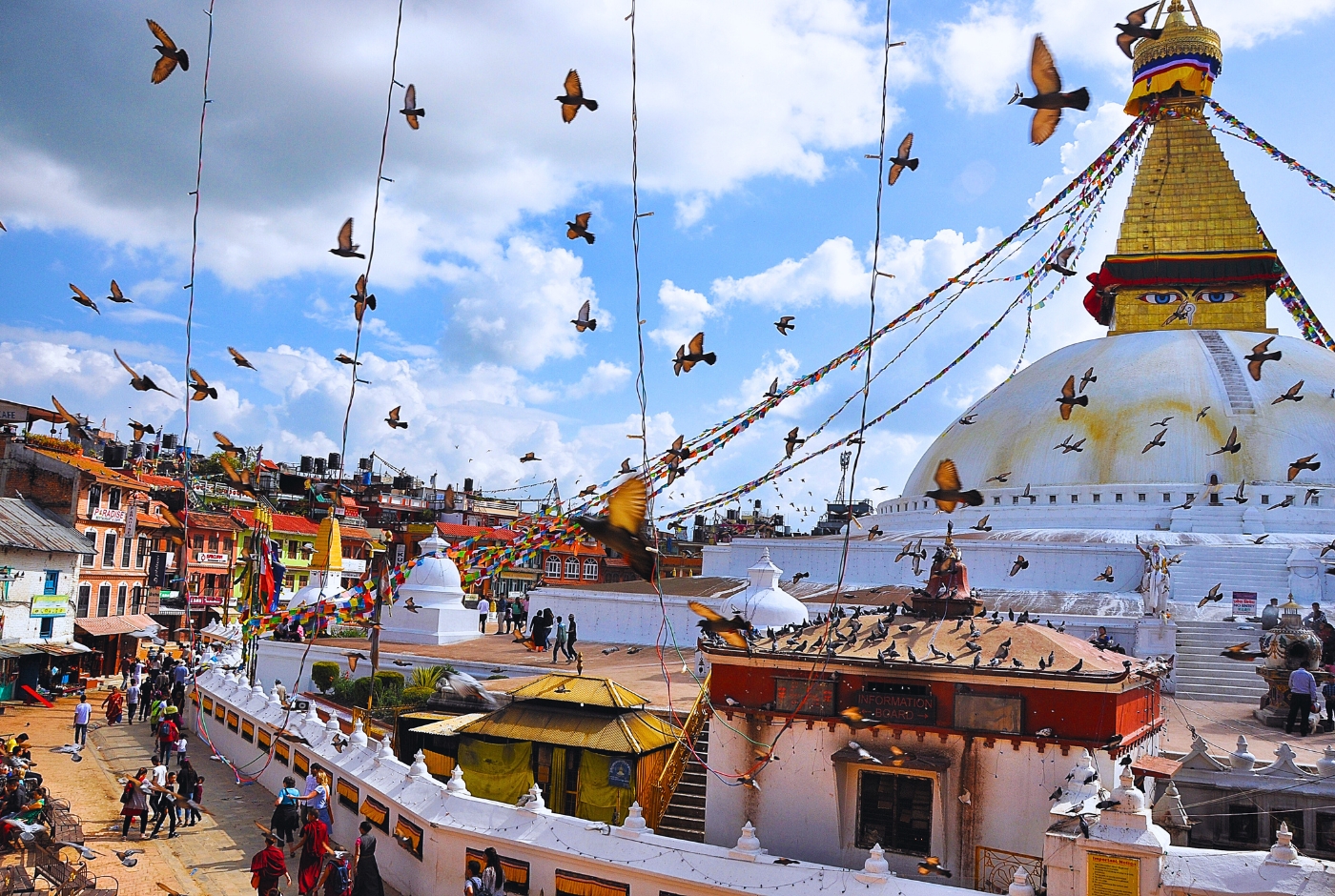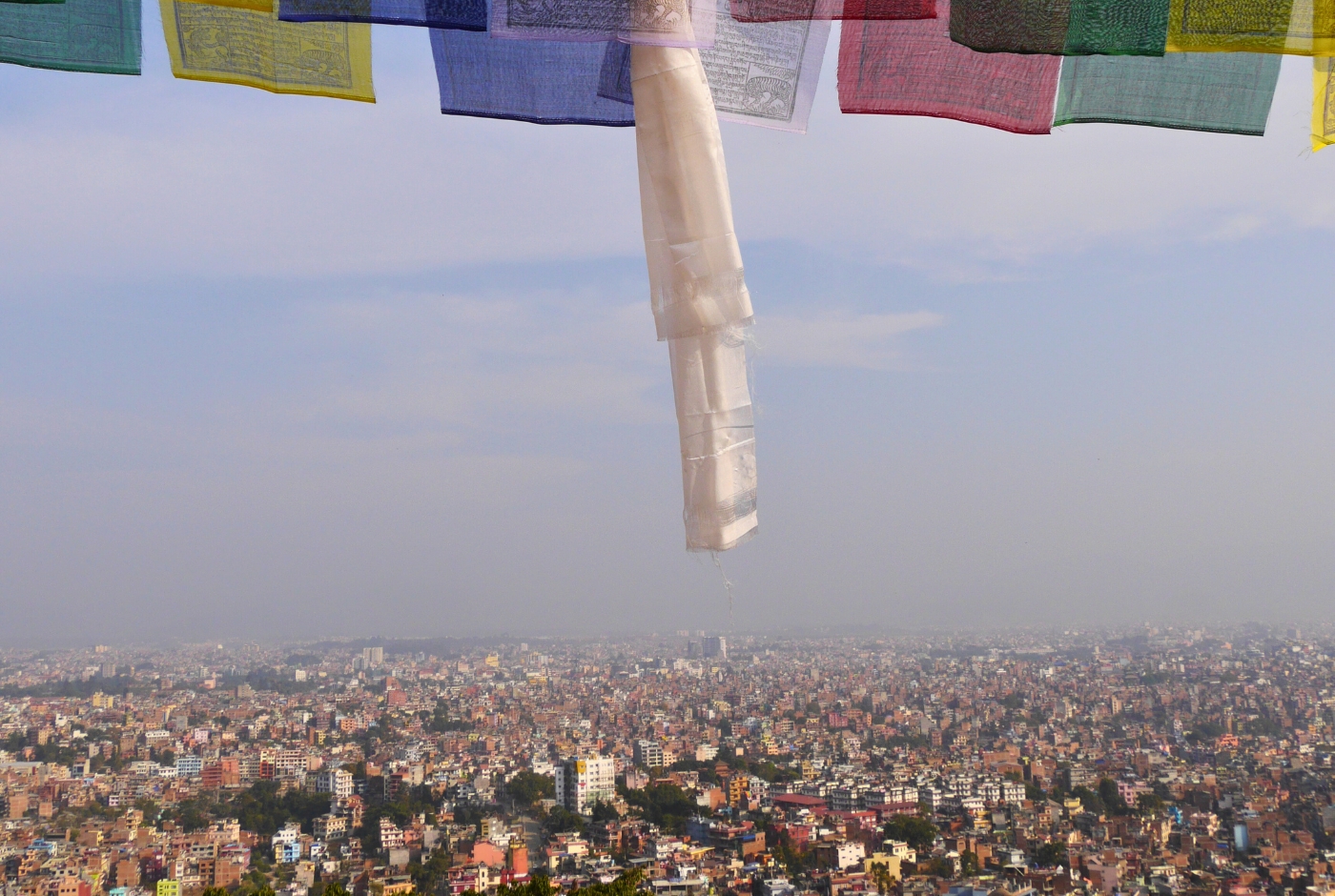Greetings, dear traveler! Let me take you by the hand and guide you on an extraordinary expedition to Kathmandu, a city that is more than just a dot on the map. Imagine a place where nature's grandeur meets human artistry. Picture a city where the altitude is not merely a figure but a living, breathing character that shapes everything around it. Sounds intriguing? Pull on your hiking boots, and let's begin our adventure!
The Altitude of Kathmandu:
Resting in the lap of the Kathmandu Valley, surrounded by majestic Himalayan peaks, Kathmandu's elevation is approximately 1,324 meters (4,344 feet) above sea level. But, my friend, this isn't merely a number. It's the city's heartbeat, pulsing through the weather, the vistas, and even the lifestyle of the locals. Every element of Kathmandu's essence is touched by this unique altitude. Allow us to show you how.
Kathmandu Location: Where is Kathmandu Located?
Kathmandu is located in the Kathmandu Valley in central Nepal, specifically within the Bagmati Province. It is not located in India, It sits at an elevation of about 4,344 feet (1,324 meters) above sea level. The city is situated in the northwestern part of the valley, north of the Bagmati River. Kathmandu is surrounded by several mountains, including Shivapuri, Phulchoki, Nagarjun, and Chandragiri.
- Region: Central Nepal.
- Province: Bagmati Province.
- Valley: Kathmandu Valley.
- Latitude and Longitude of Kathmandu: 27°42′N 85°20′E.
- Kathmandu Altitude: 4,344 feet (1,324 meters) above sea level.
- Surrounding Areas: East (Bhaktapur and Kavrepalanchok), West (Dhading and Nuwakot), North (Nuwakot and Sindhupalchok), South (Lalitpur and Makwanpur).
- Rivers: Near the confluence of the Bagmati and Vishnumati rivers.
- Geographic Features: Hilly region, surrounded by mountains.
Absolute Location of Kathmandu
Kathmandu's absolute location is 27°42′N 85°20′E. This translates to approximately 27.70 degrees North latitude and 85.33 degrees East longitude. The city is situated in the central area of Nepal, specifically within the Kathmandu Valley, and lies at an average elevation of 1,400 meters (4,600 feet) above sea level.
The Climate: A Symphony of Seasons
With its elevation offering the perfect embrace, Kathmandu's climate is an enchanting symphony:
- Spring: Picture the colorful dance of blossoms, a gentle caress of the wind. Spring in Kathmandu is poetry in motion, ideal for hiking and absorbing nature's awakening.
- Summer: Enter the monsoons, a season where rain paints the landscape in hues of emerald. It's a magical transformation, where droplets bring life to every leaf.
- Autumn: Imagine crystal-clear skies, air tinged with freshness, and mountain vistas that take your breath away. Autumn invites explorers to revel in its clarity.
- Winter: While chillier, winter is a warm embrace, a time to delve into the city's cultural treasures and celebrate with the locals.
Explore Kathmandu: A Personal Guide
Kathmandu extends a rich tapestry of experiences:
- Swayambhunath Stupa: Climb the steps, feel the spirituality, and gaze over the city's panorama.
- Durbar Square: A place where history whispers through the stones.
- Boudhanath Stupa: Meditate, explore, and connect with the Tibetan essence.
- Pashupatinath Temple: Stand before one of Hinduism's sacred places, a blend of divine beauty.
- Nagarkot: Witness the sky kissed by the sun, as dawn and dusk take turns in enchanting you.
kathmandu Elevation: What is the height of Kathmandu?

Understanding the Influence of Altitude
Kathmandu's altitude is its DNA, defining everything from weather to attractions. Here's a glimpse:
- Elevation ((1,324 meters): Not just a figure but a melody shaping weather and views.
- Year-Round Travel? Absolutely! Each season serenades with distinct beauty.
- Altitude-Related Risks? Minor, as the city's elevation (just around 1400m) is moderate.
- Snow? Rare in Kathmandu, but nearby peaks may dazzle with white crowns.
Short Hikes near Kathmandu
Explore some of the shortest hikes from
Jamacho Day Hike: Revel in the stunning views of the Kathmandu Valley.
Nagarkot Hiking: Escape from the hassle and buzzle of Kathmandu city.
Chandragiri Hiking: The best views of the Himalayan range from Kathmandu.
Thrilling Adventures From Kathmandu
Beyond city boundaries, trails beckon:
- Everest Base Camp Trek: Touch the sky, feel the might of Earth's crown.
- Langtang Valley Trek: Traverse forests to meadows, a journey through nature's gallery.
- Annapurna Circuit Trek: Peaks to villages, a pathway through diversity.
Can you see Everest from Kathmandu?
Yes, you can see Mount Everest from Kathmandu on a clear day—if you're at a high vantage point.
What is the Highest Point in Kathmandu?
Phulchowki is the highest point in Kathmandu Valley, standing at 2,795 meters above sea level. The name Phulchowki translates to "Hill of Flowers" in Nepali, reflecting its lush biodiversity.
Best Viewpoints Near Kathmandu
- Chandragiri Hill – A scenic hilltop with a cable car offering views of Mount Everest, Cho Oyu, Gaurisankhar, and more.
- Dhulikhel – A culturally rich area with distant views of Mount Everest.
- Nagarkot – A popular hill station with a sweeping view of the Himalayas.
- Chovar – A lesser-known Himalayan viewpoint near Kathmandu.
Other Ways to See Mount Everest
- Fly to Lukla – Take a flight to Lukla, then trek to Everest Base Camp.
- Take a Helicopter Tour – Experience a breathtaking helicopter tour to Everest Base Camp or Mount Everest itself.
Katmandu: What is the height of Kathmandu?

What is Height of Kathmandu, Nepal?
Kathmandu, Nepal’s capital, sits at 4,344 feet (1,324 meters) in the heart of the Kathmandu Valley, a bowl-shaped region in central Nepal.
Explanation
- The city is surrounded by hills and Himalayan peaks, including Shivapuri, Phulchoki, Nagarjun, and Chandragiri.
- The Kathmandu Valley spans across three districts: Kathmandu, Lalitpur, and Bhaktapur.
- The Bagmati River flows through the valley, playing a vital role in the region’s culture and daily life.
- Kathmandu is Nepal’s most populous city and serves as the country's cultural, political, and economic hub.
Altitude Sickness
- Altitude sickness is generally a concern above 2,500 meters, so you’re unlikely to experience severe effects in Kathmandu.
- However, it’s best to take it easy for the first few days in Nepal, especially if you’re heading to higher elevations.
Nepal’s Average Elevation
- Nepal has an average elevation of 10,712 feet (3,265 meters), making it the second-highest country in the world by average altitude.
- The terrain ranges from the lowland Terai (less than 100 meters) to the world’s highest peak, Mount Everest (8,848.86 meters).
What is Kathmandu Famous for?
Kathmandu, Nepal is famous for its rich culture, historical monuments, and temples. It's also a popular destination for adventure tourism and trekking.
Temples and stupas
- Boudhanath Stupa: A sacred Buddhist worship site in the Kathmandu Valley that contains relics of the Buddha
- Swayambhunath Temple: A holy Buddhist and Tibetan shrine located on Semgu Hill
- Changunarayan Temple: Nepal's oldest temple, known for its history and early Nepalese art
- Budhanilkantha Temple: A temple in the Kathmandu Valley where a spiritual ceremony takes place on the water
- Pashupathinath Temple: A hindu temple in the Kathmandu Valley
Squares
- Durbar Square: The former palace of the kings of Kathmandu, where they were crowned and ruled
- Patan Durbar Square: A cultural center in Lalitpur with Hindu and Buddhist temples
Other attractions
- Garden of Dreams: A neoclassical garden in Kaiser Mahal that offers a peaceful escape
- Kopan Monastery: A Tibetan monastery near Boudhanath
Activities
- Trekking and adventure tourism in the Himalayan mountain range
Top 15 best things to do around Kathmandu Valley
The capital city of Himalayan kingdom Nepal- Kathmandu, offers various things to do in Kathmandu for travelers. Home to more than a million citizens, Kathmandu is full of cultural and natural vibrancy. Original home to Newars, the city is filled with monuments influence by Newar culture and traditions. The city is also known for embracing Nepal's diverse cultures that gracefully blend with its natural beauty.
- Go for a mountain flight
- Take a short hike to the nearest hiking spots around Kathmandu
- Visit the world heritage sites based in Kathmandu valley
- Visit the villages surrounding Kathmandu
- Go for a cycling ride
- Take a cooking class and learn about Nepalese cuisine
- Visit authentic Newar towns around Kathmandu
- Fly like a bird by doing Paragliding
- Relish with evergreen forests of the Royal botanical garden of Godawari
- Rock climbing
- Enjoy the cable car ride to Chandragiri hills
- Visit the monasteries located on the outskirts of the Kathmandu valley
- Explore the chaotic market of Ason
- Spend a blissful day in the Garden of Dreams
- Go for a one-day rafting adventure to the Trishuli River.
Checkout details what can you do during the leisure time in Kathmandu Valley.
Is Kathmandu cheap or expensive?
Kathmandu is generally considered a very affordable city, particularly for travelers on a budget. It's often ranked among the least expensive cities in the world. While costs can vary depending on accommodation, food choices, and activities, Kathmandu offers a relatively low cost of living compared to many other major cities.
- Accommodation: You can find furnished rooms with shared toilets for around $100 a month, and even $200 for a furnished apartment. Long-term stays at guesthouses or with families can offer even lower prices, potentially as low as $300 a month for a room and Nepali-style meals.
- Food: Eating locally is extremely affordable, and you can easily cook your own meals for around $5 a day without meat. Simple vegetarian meals at restaurants can also be very inexpensive.
- Transportation: City buses are very cheap.
- Other expenses: Things like visa charges and internet access are also relatively low in cost.
Kathmandu is a very budget-friendly city, especially for those who enjoy local experiences and are willing to embrace a more frugal travel style.
Which Indian city is close to Kathmandu?
The closest Indian city to Kathmandu is Raxaul, located in the East Champaran district of Bihar. Raxaul is a major border town and serves as a key gateway between India and Nepal, particularly for trade and transit. It is also connected to Kathmandu by a planned railway link, further enhancing the connectivity between the two cities.
Do you need cash in Kathmandu?
Yes, cash is highly recommended and often essential for traveling in Kathmandu and Nepal in general. While credit and debit cards are accepted in some urban areas, cash remains the most widely used form of payment, especially in local stores, markets, and for everyday purchases.
- Widely Accepted: Cash is the preferred method of payment for many local businesses, including small shops, restaurants, and even taxis.
- Rural Areas: In more rural areas and when trekking, card payments are less reliable, making cash a necessity.
- Taxes and Permits: Even for paying for permits or purchasing cards for UNESCO sites, cash is often required.
- Mobile Payments: As a tourist, access to mobile payment systems and banking may be limited.
While some larger hotels, restaurants, and shops might accept cards, it's advisable to have sufficient cash on hand for a smoother and more convenient travel experience.
Conclusion: Kathmandu, A Symphony of Soul
Kathmandu's altitude (1324m /4,344 feet) isn't a mere statistic; it's the symphony that plays through every aspect of the city. It's a melody you'll hear in the wind, see in the vibrant colors, and feel in the warmth of the people. From weather to adventures, culture to spiritual experiences, this city will leave imprints on your heart.
So, pack your soul with excitement, open your arms to embrace the unknown, and let Kathmandu's landscapes, heritage, and climate inspire you. I'll be here, ready to answer any questions or provide insights tailored to your curiosity.
Happy travels, and see you in Kathmandu!



Post a Comment